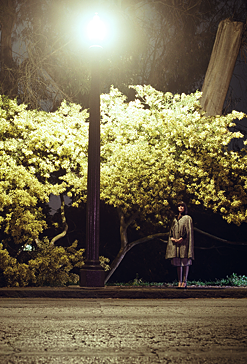Here are some very cute shoes by Worn Again, a green UK company. Their casual sneakers are a witches brew of recycled materials. A pinch of old men's suits, a dash of car seats and a teaspoon of prison blankets and poof: sweet sneaks.

As blogged about on Tree Hugger, Worn Again recently came under fire by the UK’s Daily Mail because this green shoe company (an offshoot of Terra Plana) manufactures their shoes at a factory in Guangdong, China. They reported that the factory, Brilliant, which also makes shoes for Next, Gap and US fashion label Bathing Ape, has poor environmental and labor practices. About 60,000 pairs of shoes are produced every year for Terra Plana - a relatively small contract for a vast plant churning out around 2.5million pairs of shoes a year. Besides exposing that the town is highly polluted and the river is black like soy sauce, is unable to support any life and emits a toxic odor, the article has some pretty damning testimony from workers.
“They complained bitterly about the cramped, grimy living conditions where ten workers share one small 16 square metre room, and said canteen food was so bad they ate in cheap cafes outside the factory when they could afford to. A meal for two in a simple restaurant costs 45 yuan (£2.93).
‘I work with this strong glue every day and I don’t believe it is good for me. After doing this for eight hours a day, you have no sense of smell and no sense of taste.' ”
Last February, one-tenth of the factory’s workers returned home for New Years and didn’t return to work at th factory. Since then, the factory has had difficulty filling all 4 production shifts.
Thinking Like an Econista
The point of this post isn’t to further punish Worn Again and it isn’t to expose the poor environmental and labor conditions in China (we can well imagine what these are like).

My point is to say that the sustainable fashion movement needs to cut companies like Worn Again some slack. If you take a look at Worn Again’s website you see that they talk a big game about how green they are and all of their lofty plans on how they are going to save the world. Yeah, it’s kind of annoying but when was the last time Nike talked about saving the world? Worn Again uses recycled materials and donates proceeds to various charities… right there we are making progress and I think we should be happy with that for now (if in 5 years they’re still talking big and failing to meet our standards, then get on their case).
We greenies need to nurture these small companies that are trying to be environmentally and socially responsible within a highly entrenched system that doesn’t care about such things.
Our civilization needs to EVOLVE. And evolution means seeing what works and what doesn’t - survival of the fittest - so let’s make sure these green companies survive by supporting them financially and politically.
As I’ve said before, green customers are more educated and have higher standards, but we don’t want to be impossible to please. Save the attack dogs for the multinational corporations who nurture their bottom line and nothing else.
 Each year, Americans throw away some 100 billion polyethylene plastic bags. (Only 0.6 percent of plastic bags are recycled.) When one ton of plastic is recycled, the energy equivalent of 11 barrels of oil are saved.
Each year, Americans throw away some 100 billion polyethylene plastic bags. (Only 0.6 percent of plastic bags are recycled.) When one ton of plastic is recycled, the energy equivalent of 11 barrels of oil are saved.


























